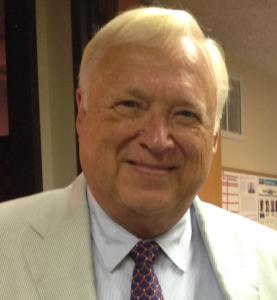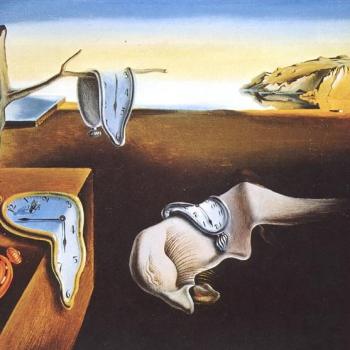AI and Radical Life Extension. Afterlife 17

In this Patheos series on the afterlife, we’ve been looking at alternative religious understandings of what happens after we die. How about a techie understanding? Specifically, what do Artificial Intelligence (AI) techies and their transhumanist friends think? Well, they put together AI and Radical Life Extension (RLE). Here we ask: how? (Maher and Mercer, 2009).
AI and Cybernetic Immortality
How do AI techies and transhumanists put together AI and Radical Life Extension? In two ways.

The first way to connect AI and Radical Life Extension is through cybernetic immortality (CI). Accordingly, we upload our brain circuit patterns into a silicon substrate and continue to live consciously in a disembodied state. We live in the computer cloud, so to speak. “Humans will be able to upload their entire minds to The Living Cyberspace and BECOME IMMORTAL,” writes Henrique Jorge in The Transhumanism Handbook (Lee, 2019, p. 650). The immortality that ancient religions allegedly could not deliver will soon be a gift of technology, namely, a disembodied soul living on indefinitely.
In the lexicon of Natasha Vita-More, Executive Director of Humanity+ Incorporated, Posthuman refers to “a person who can co-exist in multiple substrates, such as the physical world as a biological or semi-biological being. The future human…will live much longer than [today’s] human and most likely travel outside the Earth’s orbit” (Vita-More, 2018, p. 31). Does posthuman describe what will survive after today’s Homo sapiens have gone extinct?
We must ask: are we talking about the future human or the future posthuman? Vita-More envisions immortality for the posthuman. Aubre de Grey, in contrast, contends that AI and Radical Life Extension should apply to you and me in our present human state. The National for Biotechnology Information is asking how AI might help today’s human to live longer.
AI and Radical Life Extension in Aubre de Grey
The second form of technological afterlife is what our term, RLE, specifically refers to, namely, extending life in our embodied form. Could we live forever as biological beings? Could we find ourselves once again in the PTA after our 600th birthday? “Yes,” answer our utopian transhumanist friends.
To alter our genomes in order to foster longevity is the “personal motivation in developing medicines to combat aging,” according to longevitist Aubrey de Grey (Gouw & Brian Patrick Green and Ted Peters, 2022, p. xiv). It is de Gray’s hope that some in our own generation will live to be a thousand years old or more. Unless we get run over by a bus, that is.
AI and Radical Life Extension in Project Blueprint
Bryan Johnson might be worth mentioning. Johnson is an AI whiz kid who founded Kernal, a company making devices that monitor brain activity. Johnson’s Project Blueprint sounds like what one would find recommended at the neighborhood health food store: improved dietary practices, caloric restriction, intermittent fasting, and taking supplements. Experimenting on himself, the 46-year-old Johnson underwent a series of one liter plasma transfusions, using his 18-year-old son as one of the donors. Johnson’s goal is to get his organs to look and act like those of an 18-yar-old.
Johnson’s prophylactic therapy is directed by AI. “I’ve built an algorithm that takes better care of me than I can myself. It has exceeded my abilities.” The future of immortality will require the medical input of AI.
Like Johnson, William Faloon of Life Extension Magazine asks AI to identify drugs that slow aging. Futurist Dan Robitzski elaborates in Neoscope.
“New developments in both sophisticated machine learning and biomedical research suggest that AI may soon be even better equipped to find new ways to extend our lifespans — and our healthspans — than human scientists.”
Christians on RLE versus Resurrection of the Body

In the social media war over AI utopian promises, Alex McFarland Ministries shoots back at Johnson’s Project Blueprint.
Throughout history humans have longed for immortality, the fountain of youth, and the secret to beat physical death which seems inevitable. The good news is that immortality has always been possible, and it is not hard to achieve, but it won’t come about through any man-made or cleverly AI contrived pathways. The perpetual life and happiness that all seek is found in a relationship with God and that comes through a relationship with Jesus Christ. Immortality can begin today for each person who will put their faith not in the schemes of man, but in the Savior, who is as close by as a prayer. (McFarland Ministries)
Does the anti-aging movement look a bit like a secularized hope for salvation? Anthony Howarth, writing for the Oxford Institute of Population Aging, thinks so.
“The futurist imaginaries articulated by advocates of the Western RLE arose in the high-tech venture capital culture of Silicon Valley, from the techno-futurology of the Singularity doctrine, and out of biotechnology. It claims that human life span will increase through the development of technology, and will eventually be extended indefinitely. Although its claims are secular, the Movement’s underlying logics appear to be grounded in a combination of Christian and materialist metaphysics. For example, the movement’s prediction that they are at the threshold of attaining radical life extension, appears to be based as much on a politics of hope resembling Christian notions of salvation, as it is on technological outcomes.”
But, in the service of public theology I ask: how does the secularized doctrine of techno-salvation compare with the religious vision it seeks to replace? In a previous post, I asked whether RLE would fulfill the dream of immortality that is promised in Christian faith. No, according to philosophical theologian Benedikt Göcke, (Resurrection by Glenn Bautista)
“Although Christians fully enjoy being alive and, in normal circumstances, seek to lengthen their time in this world in order to do good and to recognize and respond to the grace of God, the transhumanist vision of what often is misleadingly called “immortality” is theologically irrelevant. First, even an enhanced human body that knows no natural death is not an invulnerable human body and can be killed or destroyed in numerous ways. Second, our universe has only a finite existence and, according to the second law of thermodynamics, is bound to come to a state in which life is impossible. As a matter of physical necessity, human subjects cannot lead an infinitely long life in this world. Third, from a Christian point of view it is not the duration of a particular human life that is important but the moral quality of the life led and the human individual’s response to the call of God. A short life can be morally exemplary, and along or an indefinitely long life can be morally horrendous in the eyes of God. The duration of a human life is therefore eschatologically irrelevant” (Göcke, 361).
Conclusion
First, we must ask a technological question. Is it likely or even possible that AI techies will develop the technology to make either CI or RLE happen?
Second, we must then ask a theological question. Do these two visions of techno-utopia comport with what Christian’s envision as resurrection of the dead?
I am not in a position to render a definitive answer to the first question. To the second, I must say that the biblical picture of resurrection provided by St. Paul (1 Corinthians 15:42-44) does not look at all like either CI or RLE.
In the cases of both CI and RLE, we humans would continue to live indefinitely with our same personalities, our same foibles, and our same propensities for sin. But, because of God’s plan to transform our deformed way of being-in-the-world into eternal life, the biblical promise looks much more magnificent and glorious.
Even so, a longer life on this world — if it’s a healthy and flourishing life — could have a value in itself. Not an ultimate value. But still well worth pursuing.
Patheos ST 4127 Radical Life Extension. Afterlife 17.
Afterlife? Really? What are the options?
- The Denial of Death
- Naturalism: When yer dead yer dead!
- Astral Body? Ka? Or Angel?
- Third Day Afterlife
- Immortal Soul
- Reincarnation
- Near Death Experiences
- Communication with the Dead
- Absorption into the Mystical Infinite
- Resurrection of the Body
- Heaven
- Hell
- Purgatory
- Universalism, Grace, and Hellfire
- Predestination and Destination
- Afterlife Resources
- Radical Life Extension
▓

Ted Peters directs traffic at the intersection of science, religion, and ethics. Peters is an emeritus professor at the Graduate Theological Union, where he co-edits the journal, Theology and Science, with Robert John Russell on behalf of the Center for Theology and the Natural Sciences, in Berkeley, California, USA. He authored Playing God? Genetic Determinism and Human Freedom? (Routledge, 2nd ed., 2002) as well as Science, Theology, and Ethics (Ashgate 2003). Along with Martinez Hewlett, Joshua Moritz, and Robert John Russell, he co-edited, Astrotheology: Science and Theology Meet Extraterrestrial Intelligence (2018). Along with Octavio Chon Torres, Joseph Seckbach, and Russell Gordon, he co-edited, Astrobiology: Science, Ethics, and Public Policy (Scrivener 2021). Along with Arvin Gouw and Brian Patrick Green, he co-edited Religious Transhumanism and Its Critics (Lexington 2022). He is also author of UFOs: God’s Chariots? Spirituality, Ancient Aliens, and Religious Yearnings in the Age of Extraterrestrials (Career Press New Page Books, 2014). Look for his newest book, The Voice of Public Theology, a collection of previous articles. See his website: TedsTimelyTake.com.
▓
References
Gocke, B. P. (2017). Christian Cyborgs: A Plea for a Moderate Transhumanism. Faith and Philosophy 34:3, 347-364.
Gouw, A., & Brian Patrick Green and Ted Peters, e. (2022). Religious Transhumanism and Its Critics. Lanham MA: Rowman and Littlefield / Lexington.
Lee, N. e. (2019). The Transhumanism Handbook. Switzerland: Springer ISBN 978-3-030-16922-0.
Maher, Derek F. and Calvin Mercer, eds (2009). Religion and the Implications of Radical Life Extension. New York: Macmillan Palgrave.
Peters, T. (2011). Transhumanism and the Post-Human Future: Will Technological Progress Get Us There? In e. William Grassie and Gregory Hansell, H+ Transhumanism and Its Critics (pp. 147-175). Philadelphia: Metanexus Institute.
Vita-More, N. (2018). Transhumanism: What is it? New York: Self Published.


















